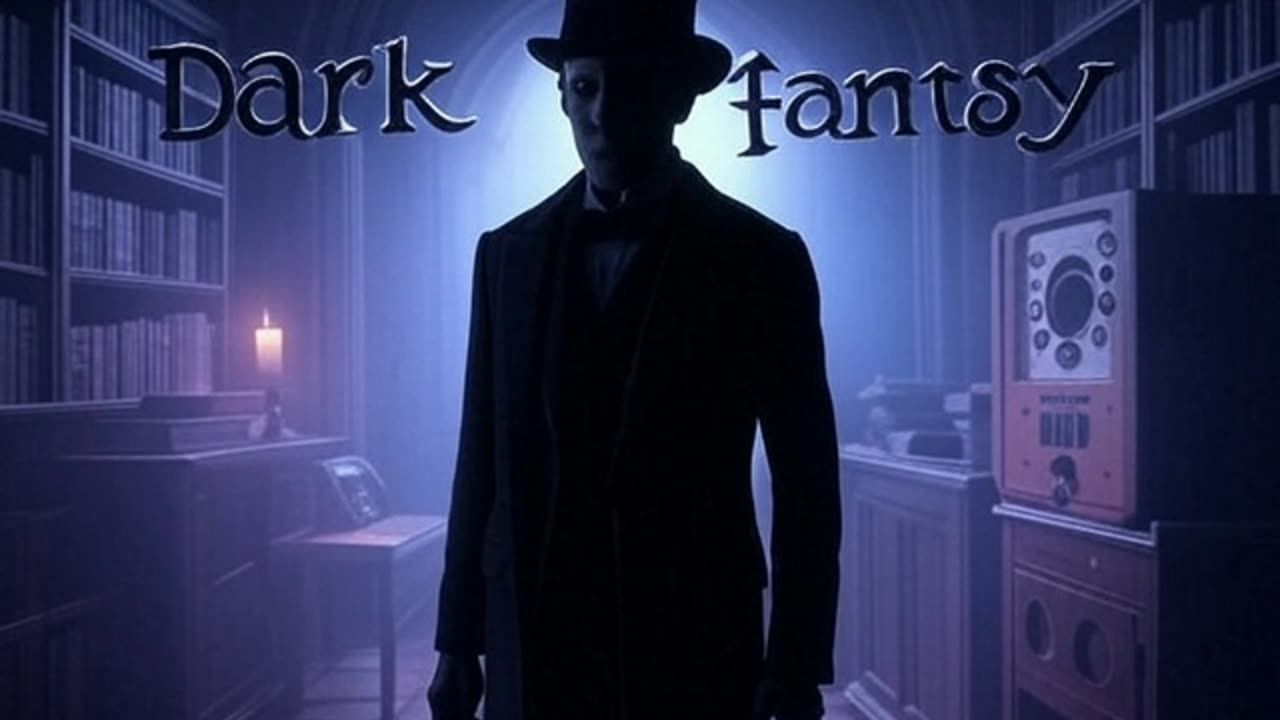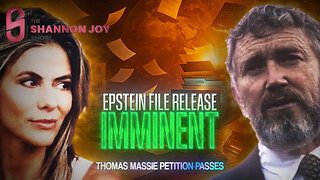Premium Only Content

Dark Fantasy: I Am Your Brother (June 5, 1942)
Setting: A contemporary (1942) American small town or urban setting, with scenes likely in a family home, a mysterious estate, or a shadowy alley. The episode employs sound effects such as creaking doors, footsteps, eerie whispers, and possibly animalistic growls to create a chilling, suspenseful atmosphere, emphasizing themes of mistaken identity and supernatural dread.
Plot:
Introduction: The episode opens with the Dark Fantasy theme, a haunting orchestral score, followed by announcer Tom Paxton (or possibly Keith Payton, as sources vary) introducing the series as a journey into “tales of the weird and supernatural.” The narrator sets the stage for “I Am Your Brother,” hinting at a disturbing tale where a man’s identity is questioned by a sinister force, promising listeners “goose pimples” as per Bishop’s style.
The Premise: The story likely centers on a protagonist, perhaps a man named John or Robert, who is confronted by a mysterious figure claiming to be his brother—a claim he denies, as he believes he has no sibling or his brother is dead. This stranger, possibly named Paul or a similar name, insists on their familial bond, displaying uncanny knowledge of the protagonist’s life. The title “I Am Your Brother” suggests a supernatural twist: the “brother” could be a doppelgänger, a ghostly sibling, or a creature masquerading as kin, possibly tied to a family curse or occult ritual. The narrative may involve the protagonist’s growing paranoia as he uncovers clues about his past, such as a hidden family secret or a tragic event.
Escalating Horror: As the protagonist investigates, eerie events unfold—strange noises, sightings of the “brother” in impossible places, or warnings from a neighbor or priest about a local legend. Bishop’s scripts often blend Gothic and Lovecraftian elements, so the “brother” might be a shapeshifter, a demon, or a manifestation of repressed guilt, with its true form revealed through grotesque transformations. Key scenes could include a tense confrontation in a darkened house, a discovery of old family records, or a chase through foggy streets, with sound effects like growls, shattering glass, or a heartbeat intensifying the terror. The protagonist’s reality unravels as the “brother” manipulates his perceptions, blurring the line between truth and illusion.
Climax and Resolution: The climax likely involves a desperate showdown where the protagonist confronts the “brother,” seeking to banish or destroy it. The resolution may reveal the stranger’s true nature—perhaps a vengeful spirit tied to a family tragedy or a creature exploiting the protagonist’s loneliness. Bishop’s endings often lean ambiguous or grim, so the protagonist might defeat the entity but lose his sanity, or realize too late that he is somehow complicit in its existence. The episode closes with the narrator reflecting on the fragility of identity, leaving listeners unsettled. The 29-minute runtime, noted in owltail.com, suggests a dialogue-heavy, suspenseful narrative.
Themes: The terror of uncertain identity, the weight of family secrets, and the horror of supernatural impostors. The episode reflects Dark Fantasy’s focus on psychological dread and existential fear, resonating with wartime anxieties about trust and hidden threats.
Cast and Roles:
Protagonist (John/Robert): Played by an unnamed actor, likely Ben Morris or Fred Wayne, voicing a relatable everyman with growing paranoia, shifting from skepticism to terror as the “brother”’s claims intensify.
The “Brother” (Paul or Similar): Played by an unnamed actor, possibly Garland Moss or Murillo Scofield, voicing the mysterious figure with a mix of eerie familiarity and menace, possibly adopting a distorted tone for supernatural reveals.
Supporting Characters: An ensemble of unnamed actors, possibly including Eleanor Naylor Caughron, playing roles such as:
Family Member/Neighbor: Voiced with concern or fear, warning the protagonist of danger.
Priest/Mystic: Voiced with gravitas, offering clues about the “brother”’s origins.
Minor Roles: Townsfolk or spectral voices, adding to the eerie ambiance.
Narrator/Announcer: Likely Tom Paxton (or Keith Payton), delivering the opening and closing remarks with a somber, suspenseful tone, framing the story’s chilling mood.
Note on Cast: Dark Fantasy relied on WKY’s versatile in-house cast, with actors like Ben Morris and Eleanor Naylor Caughron known for their radio work. Specific roles for “I Am Your Brother” are unlisted, as the series rarely credited individuals, but the ensemble ensured a gripping performance.
Production Details:
Music: Ominous orchestral music, likely composed by WKY’s in-house musicians, opens and closes the episode, with eerie stings accentuating suspenseful moments, enhancing the supernatural mood.
Writer: Scott Bishop (George M. Hamaker), crafting a tale blending Gothic horror with psychological tension, likely drawing on doppelgänger myths or family curse tropes.
Director: Not explicitly credited, but likely overseen by WKY’s production team, ensuring a tight 29-minute pacing and immersive sound design.
Sound Effects: Crucial to the episode, including creaking doors, footsteps, eerie whispers, growls, or shattering glass, creating a vivid, unsettling soundscape. The “brother”’s presence might be marked by distorted voices or sudden silence.
Sponsor: None, as Dark Fantasy was typically unsponsored, airing late Friday nights (often 11:30 PM) on NBC stations, supported by WKY’s innovative programming.
World and National Events Around June 5, 1942:
To provide context for the broadcast, here are key world and national events occurring in early June 1942, reflecting the wartime climate that shaped listeners’ perspectives:
World Events:
World War II – Pacific Theater: The Battle of Midway (June 4–7, 1942) was underway, a decisive U.S. victory against Japan that shifted Pacific momentum. Radio news, buzzing with updates by June 5, celebrated the Navy’s success, lifting morale after Pearl Harbor and resonating with the episode’s theme of confronting hidden threats.
European Theater: The Second Battle of El Alamein loomed (October 1942), but in June, Allied bombing raids on Germany intensified, with radio reports highlighting RAF strikes on Cologne (May 30–31). The episode’s eerie impostor mirrored wartime fears of spies and deception.
Holocaust Escalation: Nazi deportations to death camps like Auschwitz accelerated, with limited U.S. awareness via radio. The episode’s focus on identity and betrayal echoed anxieties about trust in a world of covert enemies.
Japanese Advances: Japan’s occupation of the Philippines and Burma persisted, with radio covering Allied guerrilla efforts, amplifying fears of Axis dominance.
National Events:
War Mobilization: The U.S. war effort was in high gear, with rationing of gas, sugar, rubber, and coffee enforced. War bond drives, promoted on radio, urged civilian sacrifice, reflecting the episode’s undertones of personal cost and moral reckoning.
Japanese American Incarceration: Over 100,000 Japanese Americans were interned in camps like Manzanar under Executive Order 9066 (February 1942). Radio debates on the policy fueled wartime paranoia, paralleling the episode’s theme of questioning identity.
Entertainment and Morale: Hollywood and radio boosted morale, with films like Yankee Doodle Dandy (premiered May 29) and radio shows like The Bob Hope Show blending humor with patriotism. Dark Fantasy’s horror offered a stark contrast, channeling wartime dread into supernatural narratives.
Sports and Culture: The 1942 baseball season was underway, with the New York Yankees and St. Louis Cardinals leading. Bing Crosby’s “White Christmas” (recorded May 1942) began its rise as a wartime anthem, reflecting a yearning for peace.
-
 LIVE
LIVE
Timcast
1 hour agoAnti ICE Shooter Was Kirk Assassin Copycat, FBI Says Attack Was Planned
27,026 watching -
 LIVE
LIVE
The Charlie Kirk Show
44 minutes agoDebunking the Lies and Smears about Charlie | ThoughtCrime Team | 9.25.2025
8,473 watching -
 LIVE
LIVE
Right Side Broadcasting Network
3 hours agoLIVE: President Trump Greets Turkey’s President Erdogan - 9/25/25
1,639 watching -
 LIVE
LIVE
Steven Crowder
3 hours ago🔴 They Are Lying Because They Are Losing: ICE Shooter, White People, & ... Bees?
27,400 watching -
 LIVE
LIVE
Side Scrollers Podcast
1 hour agoYouTube ADMITS BLATANT Censorship + California Wants to FINE “Hate Speech” + More | Side Scrollers
313 watching -
 59:04
59:04
The Rubin Report
1 hour agoGavin Newsom Humiliates Himself on Colbert by Saying This Live On-Air
22.9K33 -
 LIVE
LIVE
The Shannon Joy Show
1 hour agoEpstein Enterprise Wobbling! Tom Massie Petition SUCCEEDS - Vote To Release ALL Files Imminent!
290 watching -
 LIVE
LIVE
The Mel K Show
1 hour agoMel K & Jovan Hutton Pulitzer | For Reasons of National Security: The 2020 Election Audit Continues
571 watching -
 LIVE
LIVE
LFA TV
19 hours agoBREAKING NEWS ALL DAY! | THURSDAY 9/25/25
4,522 watching -
 LIVE
LIVE
Trumpet Daily
59 minutes agoTrumpet Daily LIVE | Sept. 25, 2025
455 watching